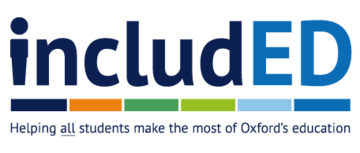Key steps for planning effective tutorials
Aspects of tutorials to consider when planning
Planning a tutorial means not only planning the aims and content of the tutorial but also what the students will do, the resources they will use and how they will work together.
These seven steps cover the key areas that need to be addressed in a tutorial plan.
Identify your aims and learning outcomes
Learning outcomes describe what students should be able to do by the end of the tutorial and so will help you to plan the session. They are related to, but different from, teaching aims, which instead describe broadly what the tutorial is about and its overall purpose. You can learn more about learning outcomes in this guidance.
Allocate (flexible) time for each tutorial activity
Have a plan for what activities will take place during the tutorial, who will be actively involved (individual students/small group work) and approximately how much time each activity is likely to take. This might mean identifying essential discussion questions, short exercises, setting aside time for summaries, student questions, and introducing the next tutorial. Allow time to draw things together at the end of the tutorial. However, it is best to be flexible as tutorials won’t always follow your plan. Having a tutorial plan that identifies essential topics and any that can be skipped or added if necessary is a useful way to ensure key content is covered, whilst allowing some flexibility for the unexpected.
Identify how students will actively participate
The best way to avoid tutorials turning into ‘mini-lectures’ is to plan in opportunities for students to actively contribute to discussions. When planning the tutorial, try designing exercises for students to work through in groups or pairs, structuring the tutorial around discussion prompts, or asking students to come prepared to present or explain an aspect of their tutorial work. This will encourage all students to participate in the tutorial and to learn from each other as well as the tutor.
Factor in student diversity
Students will bring different prior learning experiences, interests, confidence and motivation, amongst other things, to tutorials. Actively recognising this diversity is important and it can be achieved in numerous ways, for example, by providing different ways for students to engage in tutorial discussions (eg individual/pair/group work), by using a range of learning resources to support tutorial work/discussions and activities, by providing opportunities for students to pursue topics of particular interest to them, and so on.
Identify resources needed and how these will be used
Include in your plan any details of resources that will be needed to support the tutorial. This includes resources that students are expected to use in preparation for the tutorial and those that will be needed during the tutorial itself (eg whiteboard, flipchart, video, models/artefacts, diagrams). Where appropriate, consider using a range of learning resources. Oxford Reading Lists Online (ORLO enables you to create digital reading lists linking to a range of resources and improves accessibility for students.
Identify how feedback on submitted work will be provided
The quality of tutorial work submitted by your students will tell you something about their understanding of the tutorial topic, concepts or problems and will provide a baseline for your tutorial planning. When planning, it’s important to also include how and when you will provide feedback to students on their tutorial work. For example, this may be provided in the form of written/typed comments on students’ work and/or verbal feedback during the tutorial. Ensure your feedback clearly identifies strengths, prioritises areas for future improvement and is articulated in ways to motivate and encourage your students. Bear in mind the differences between giving written feedback to a student compared with providing them with verbal feedback in front of their peers. Giving effective feedback has further ideas on ways to structure written and verbal feedback.
Factor in student learning requirements
Check with the organising tutor whether students have specific learning requirements, as this may mean that teaching adjustments are essential which could impact your ideas for the tutorial plan. Some students may have a Student Support Plan outlining the adjustments they require to teaching, and this should be shared with you by the Disability Coordinator in their college, although in some instances students may wish to share their plan with you themselves. The guide to supporting disabled students includes details of common reasonable adjustments. Ensuring that your tutorial handouts and materials are in an accessible format can reduce the need to retrospectively make individual adjustments to your tutorials and will benefit all students.
You may find it helpful to use a planning template to design your tutorial(s). See an example of a tutorial planning template.
Oxford Teaching Ideas © 2024 by Centre for Teaching and Learning, University of Oxford are licensed under Creative Commons Licence Attribution-NonCommercial-ShareAlike 4.0 International .
We encourage you to adapt and build upon the material in any medium or format to suit your individual teaching purposes (for non-commercial purposes only). If distributing your adapted material, we ask that you credit the Centre for Teaching and Learning.
Contact us
For general enquiries, please contact us at
Stay informed
Follow us



